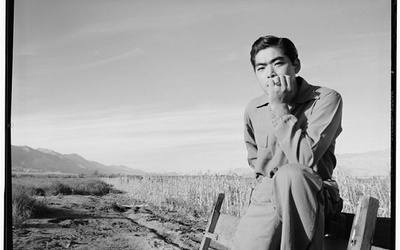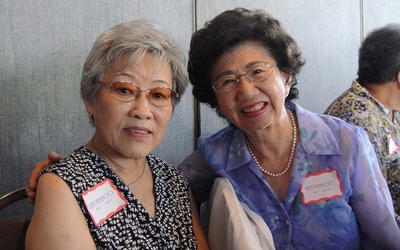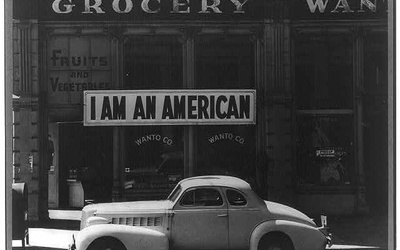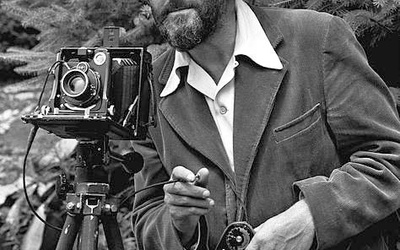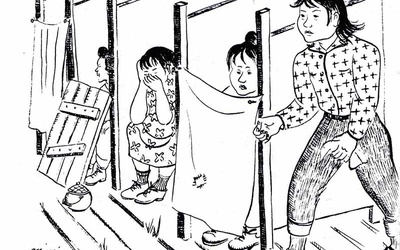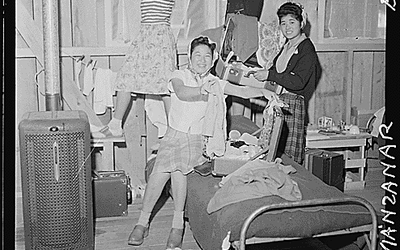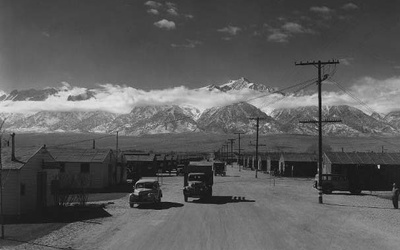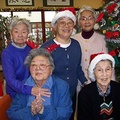
Nancy Matsumoto
@nmatsumotoNancy Matsumoto é escritora e editora freelancer que discute assuntos relacionados à agroecologia, comidas e bebidas, artes, e a cultura japonesa e nipo-americana. Ela já contribuiu artigos para o Wall Street Journal, Time, People, The Toronto Globe and Mail, Civil Eats, e TheAtlantic.com, como também para o blog The Salt da [rede de TV pública americana] PBS e para a Enciclopédia Densho sobre o Encarceramento dos Nipo-Americanos, entre outras publicações. Seu livro, Exploring the World of Japanese Craft Sake: Rice, Water, Earth [Explorando o Mundo do Saquê Artesanal Japonês: Arroz, Água, Terra], foi publicado em maio de 2022. Outro dos seus livros, By the Shore of Lake Michigan [Na Beira do Lago Michigan], é uma tradução para o inglês da poesia tanka japonesa escrita pelos seus avós; o livro será publicado pela Asian American Studies Press da UCLA. Twitter/Instagram: @nancymatsumoto
Atualizado em agosto de 2022
Stories from This Author
Documenting Manzanar - Part 8 of 18 (Ansel Adams)
15 de Agosto de 2011 • Nancy Matsumoto
Read Part 7 >>Adams, Paul Strand, and the Nisei Point of ViewHammond also defended Adams’s style against critics who found his photographs lacking in pathos or without political context. Karin Becker Ohrn, for example, in 1977 favorably contrasted Lange’s photos of concentration camp prisoners, who appeared “less controlled even slightly uncomfortable,” to Adams’s, which she deemed more “formulaic.” Hammond found a rationale for Adams’s close-up portraits, many of which are shot outdoors or against the open sky or a non-descript background: …
Partying Like a Nikkei Widow or Widower - Part 1
12 de Agosto de 2011 • Nancy Matsumoto
On a hot sunny recent Saturday, The Nikkei Widowed Group of Los Angeles held its thirty-second annual installation luncheon. About 120 smartly dressed Nisei members, both widows and widowers, filled the VIP room of the Quiet Cannon Restaurant in Montebello, California for an annual ritual that takes hours of planning and countless board and committee meetings. The planning showed; the event unfurled with military precision. From 11 to 11:50 a.m., members—most in their 70s and 80s—and guests checked in at …
Documenting Manzanar - Part 7 of 18 (Ansel Adams)
8 de Agosto de 2011 • Nancy Matsumoto
Read Part 6 >>Born Free and Equal: Differing InterpretationsIn the late 1970s three graduate students in the UCLA Fine Arts Program created an exhibition and book called “Two Views of Manzanar,” which included photographs by Adams and Miyatake. Graham Howe, who along with Patrick Nagatani and Scott Rankin, opened the show at UCLA’s Frederick S. Wight Gallery in October 1977, praised Adams’s work at Manzanar in an interview as “his most compassionate body of work.” Not everyone viewed Adams in …
Documenting Manzanar - Part 6 of 18 (Ansel Adams)
1 de Agosto de 2011 • Nancy Matsumoto
Read Part 5 >>Ansel Adams: Gifted Pianist Turned Master PhotographerBy the time he arrived at Manzanar in October 1943 for the first of four working visits, Adams was a successful and famous photographer. He had helped launch the short-lived but important organization of West Coast photographers Group f/64, had exhibited in New York, had published a book (Making a Photograph), and had befriended a gallery of visionary artists, curators and writers, including Paul Strand, Alfred Stieglitz, Georgia O’Keefe, Edward Weston and curators …
Documenting Manzanar - Part 5 of 18
25 de Julho de 2011 • Nancy Matsumoto
Read Part 4 >>History Recast as Art: Documentary and Fictional Accounts of Exile and BanishmentThose views were shaped in turn by artistic, literary, documentary and nonfiction accounts of the Japanese American war experience. Born Free and Equal was forgotten amid the post-war building boom as a curtain of silence descended upon this chapter of history. One early exception was artist Miné Okubo’s powerful book, Citizen 13660, published by Columbia University Press in 1946. Okubo included 206 of her own illustrations …
Documenting Manzanar - Part 4 of 18
18 de Julho de 2011 • Nancy Matsumoto
Read Part 3 >>The Photographic Documentation of ManzanarAs Fujikawa, Alinder and Hosoe all noted, photographs of the World War II prison camps can be just as misleading as the rosy accounts of those who were imprisoned. So much so that the writer and lawyer Gerald H. Robinson titled his examination of the Manzanar photographs of Adams, Lange, Miyatake and Albers Elusive Truth. Still, it is valuable to explore how documentary photography, in the hands of talented photographers, can manipulate the …
Chef Bill Telepan and Friends Cook for Tohoku
15 de Julho de 2011 • Nancy Matsumoto
I happened to speak with Chef Bill Telepan yesterday, who was full of news about his recent trip to Japan. He was one of eight New York chefs who traveled to Kamaishi, Iwate Prefecture, one of the areas most devastated by the March 11 Greater Tohoku earthquake and tsunami. The team’s mission was to cook a heartwarming Fourth of July weekend lunch for an estimated 1,000 people in this city. “It was an amazing event, and it went perfectly,” said …
Documenting Manzanar - Part 3 of 18
11 de Julho de 2011 • Nancy Matsumoto
Read Part 2 >>Why Are They Smiling?My initial confusion about and inability to understand the Issei and Nisei attitude toward their imprisonment contributed to my fascination with the documentary photographs of Manzanar: If the Nisei and Issei would not talk about what really happened, wouldn’t photographs of the camp reveal the truth? The answer, I discovered, was “not really.” “If we judge from the images themselves,” the historian Roger Daniels wrote of the hundreds of thousands of War Relocation Authority …
Documenting Manzanar - Part 2 of 18
4 de Julho de 2011 • Nancy Matsumoto
Read Part 1 >>The Silence of the NiseiAfter the war, the newly freed Japanese busied themselves with building new lives, often far from the inhospitable West Coast of the U.S., where anti-Japanese sentiment lingered. For as long as I can remember, my father, who died in 1997, never spoke of his experience of entering Manzanar at age 13 or the imprisonment that followed. This was not unusual among Nisei, who made up two-thirds of those in the prison camp. He …
Documenting Manzanar - Part 1 of 18
27 de Junho de 2011 • Nancy Matsumoto
I first learned that Ansel Adams had published a book of photos of the World War II Japanese prison camp Manzanar from my Uncle George, our family’s unofficial historian. I had sent him a Wilderness Society booklet on the great nature photographer, and in his e-mail response my uncle wrote, “Ansel Adams was not only a famous photographer and environmentalist but also a great humanitarian. He did much to document internees for posterity when it was very unpopular to do …

